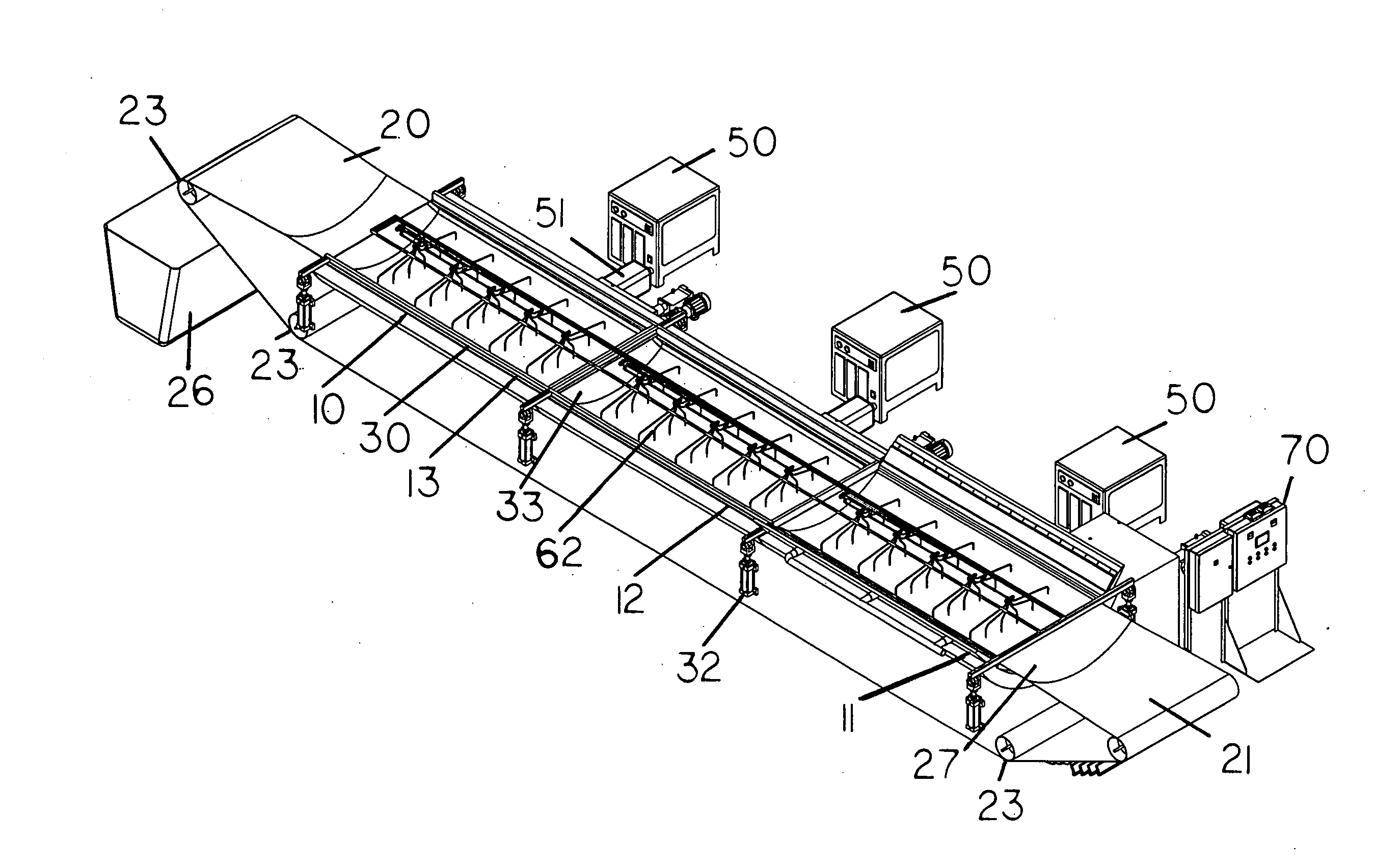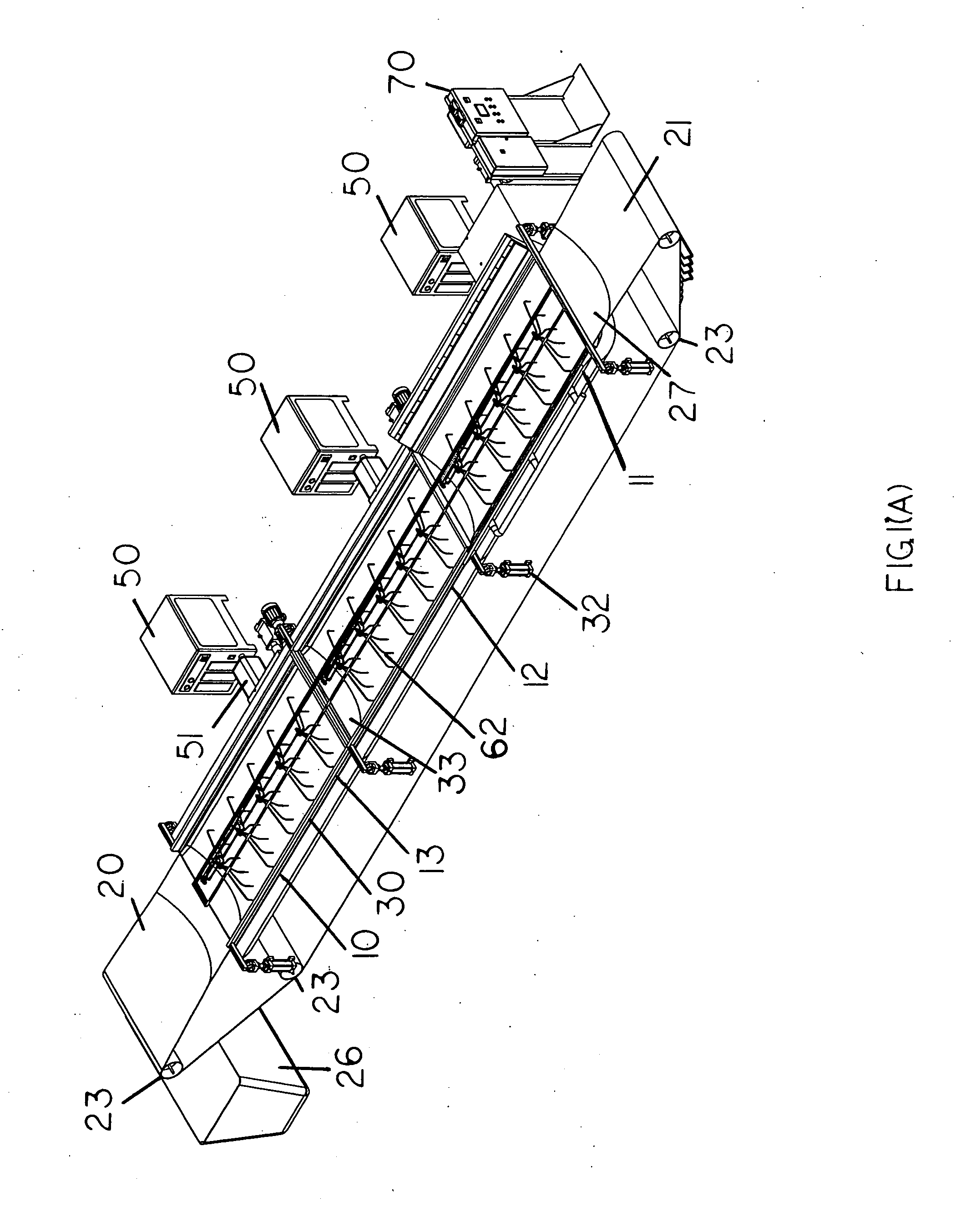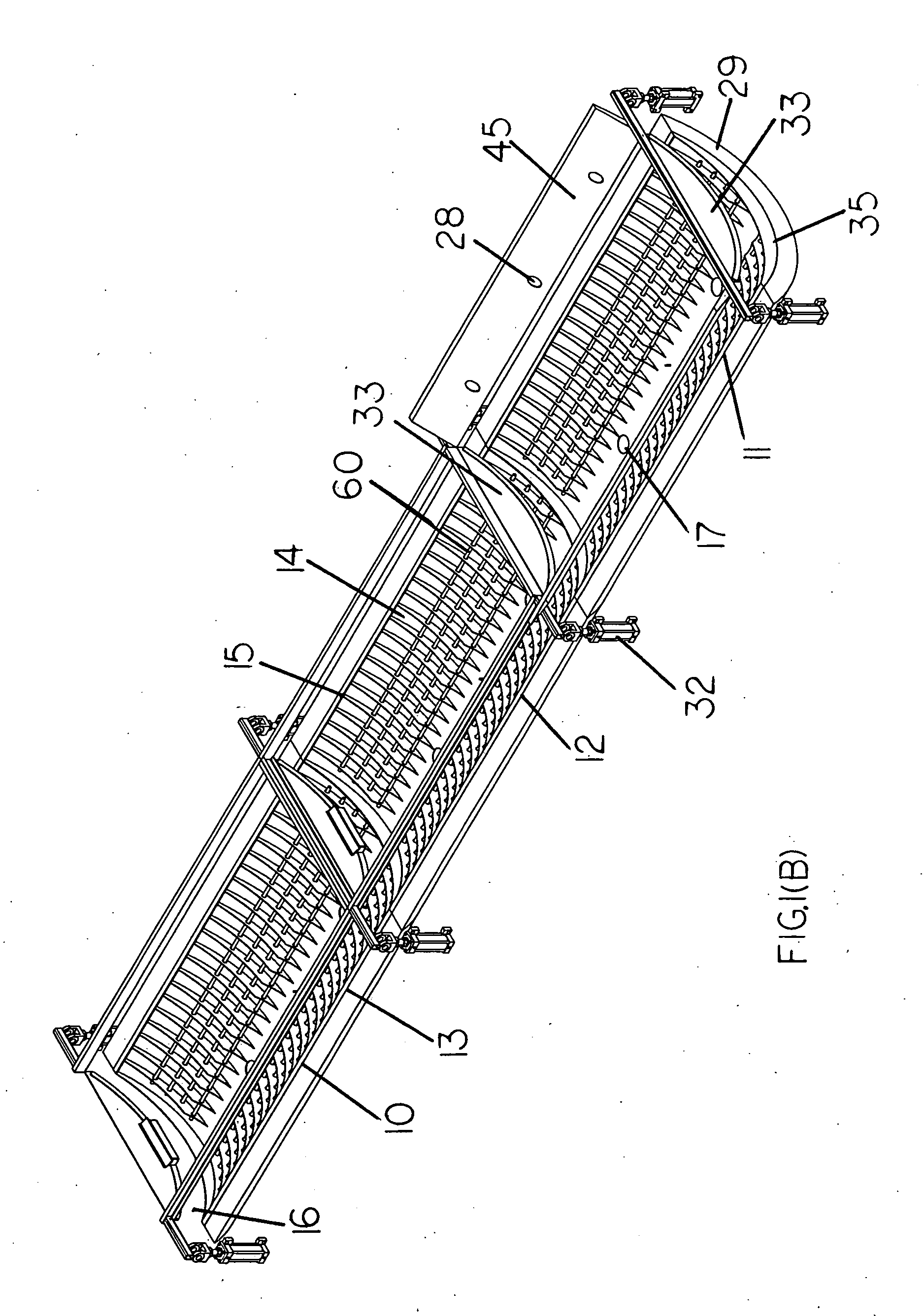Suspension liquid extraction apparatus and method
a suspension and liquid extraction technology, applied in lighting and heating equipment, multi-stage water/sewage treatment, separation processes, etc., can solve the problems of unprocessed suspensions, unprocessed suspensions typically cannot be disposed, and unprocessed suspensions are often difficult to transport and dispose of. , to achieve the effect of reducing the flow rate of air, widening the area and reducing the cost of transportation
- Summary
- Abstract
- Description
- Claims
- Application Information
AI Technical Summary
Benefits of technology
Problems solved by technology
Method used
Image
Examples
Embodiment Construction
[0042]FIG. 1(a)-(c) depict one aspect of the invention, which includes a low profile, relatively compact and horizontal container 10, preferably arced or curved in shape, which may be further subdivided into serially linked chambers 11-13 for use at an industrial or municipal site that produces a suspension, such as, for example, a waste product or a mixture of liquids and solids. Although preferably arced, other designs may be readily apparent to those skilled in the art, such as, for example, a flat container. In a preferred embodiment, the container 10 is subdivided into three chambers 11-13. The container 10 may be buried in the ground or, alternatively, may be above ground and associated with a suitable frame, if necessary, to ensure stability. Still another option is to associate the container 10 with a vehicle, such as a flatbed truck or trailer, such that it may be easily transported from one site to another and thus becomes portable.
[0043]As noted above, the container 10 is...
PUM
| Property | Measurement | Unit |
|---|---|---|
| temperature | aaaaa | aaaaa |
| pressure | aaaaa | aaaaa |
| pressure | aaaaa | aaaaa |
Abstract
Description
Claims
Application Information
 Login to View More
Login to View More - R&D
- Intellectual Property
- Life Sciences
- Materials
- Tech Scout
- Unparalleled Data Quality
- Higher Quality Content
- 60% Fewer Hallucinations
Browse by: Latest US Patents, China's latest patents, Technical Efficacy Thesaurus, Application Domain, Technology Topic, Popular Technical Reports.
© 2025 PatSnap. All rights reserved.Legal|Privacy policy|Modern Slavery Act Transparency Statement|Sitemap|About US| Contact US: help@patsnap.com



